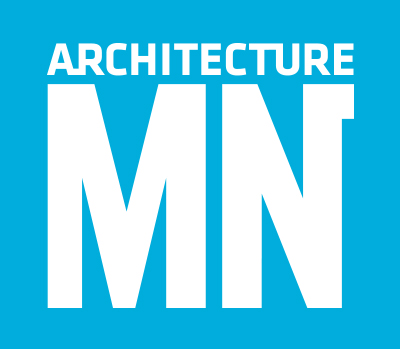HDR’s Minneapolis studio designs a new home for a charter school where kids with autism and other disabilities can learn and thrive
By Joel Hoekstra
Most weekday mornings, Jaclyn Landon drives her second-grader to school in Minneapolis. After parking the car, she walks her son inside to his locker before wishing him a good day and kissing him goodbye. As at any other school, the halls are filled with the sound of children’s voices and lined with artwork—colorful cutouts from construction paper, a collection of Cat in the Hat portraits.
But Spero Academy is slightly different from other K–6 educational facilities: Most classrooms have a sink and bathroom; there are calming rooms with dimmable lights and soundproofing where “dis-regulated” kids can go to re-center themselves; and the security doors that Landon passes through as she exits the building require a timed delay before opening. Spero’s student population is also different: 92 percent of its pupils have autism or other disabilities.
Nationally, autism rates have surged in recent years. In Minnesota, state officials estimate that nearly 1 in 42 kids under age 8 have some form of autism, ranging from mild to severe cases. But few public or private schools have the staff, resources, or physical facilities to effectively serve these students. Spero, originally known as Fraser Academy, was established as a charter school in 2004 to meet the specialized needs of children with autism and their families. Currently, the school has an enrollment of 130 students hailing from 24 school districts and 47 ZIP codes.
FOSTERING SCHOOL PRIDE
From the start, Spero’s staff were experts in teaching children with special needs. But the facilities that housed the program often fell short: Until recently, the school rented space in an old elementary school, built in 1968, that badly needed renovation. “We were grateful to have the space,” says Spero director Chipp Windham. “But the classrooms and hallways felt cramped and dark. It wasn’t designed to support children with special needs.”
In 2016, Windham and his board decided their students needed something better. They embarked on a path that would result in a new identity, location, and building. The school’s new name, Spero, can be translated from Latin as “I hope,” and it aligns, Windham says, with the dreams that students and their families have for a bright future.
The interiors of Spero’s new 63,500-square-foot facility, constructed on 3.7 acres of undeveloped property along a rail line, are also bright, illuminated by outside light even on the cloudiest days. The school, designed by HDR’s Minneapolis studio, opened last fall. “Initially, it was a little shocking, after spending so many years in a darker space,” says Windham. “But then, after that first month, it was almost like a switch flipped. The students were suddenly engaged. This was their home. This was their school.”
The kids’ comfort in the space is notable because children with autism can become easily distracted or distressed by noise, light, textures, and other stimuli that rarely bother neurotypical students. Such factors were critical in shaping the design, says HDR architect Brian Giebink, AIA. He and his team spent long hours researching academic studies on autism and design. What colors would be warm yet not distracting? What sort of lighting could be calming? How could a space visually signal the high- or low-focus activity that takes place within? “We did interviews with staff. We talked with parents. We read studies and did our own casual observation at the school,” says Giebink. “We wanted to see how design and learning went hand in hand.”
TRANSFORMABLE SPACES
The result of HDR’s efforts is a school with some small but significant differences. Many classrooms have a single window at floor level, where a child can take time away from the group and refocus by taking in the world outdoors. Lighting throughout the building is often on dimmer switches, and large windows bring enough daylight into classrooms and hallways so no additional lighting is needed. Small rooms where students can let their emotions out without distracting others are tucked away throughout the school, with alcoves where teachers can discreetly monitor pupils’ movements. A large assembly area doubles as the school’s lunchroom, and a gym, a track, and an occupational therapy room provide plenty of space for play, running, and even rock-climbing, allowing kids to burn off excess energy so they can focus.
Children with autism can be particularly susceptible to toxicity in materials, so Giebink and interior designer Bethany DeLine sought out low-emitting paint and flooring that supports healthy indoor air quality. “We put a lot of time and energy into making sure we picked the right materials,” says DeLine. Windham notes that security was also paramount—in terms of both keeping strangers out and keeping kids from getting outside and harming themselves. The school has 23 security cameras as well as egress doors on 15-second delays. The parking lot and outdoor accessible playground are surrounded by a six-foot-tall fence.
But what’s most noticeable inside is the energy and warmth provided by the students who inhabit the space. “In the old space, it seemed like everyone was making do—using converted closets and dark spaces as best they could,” says Landon. “The new space is beautiful. It offers so much—an occupational-therapy room, a speech room, a staff lounge. These are spaces you want to be in.”
SPERO ACADEMY
Location: Minneapolis, Minnesota
Client: Spero Academy
Architect: HDR
Principal-in-charge: Amy Williams, AIA
Project manager: Michael Nelson, AIA
Project lead designers: Brian Giebink, AIA (architecture); Bethany DeLine (interiors)
Energy modeling: The Weidt Group
Landscape architect: Loucks
General contractor: Rochon Corporation
Development manager: JB Vang
Size: 63,500 square feet
Cost: $10.5 million
Completion: August 2018
Photographer: Dan Schwalm


